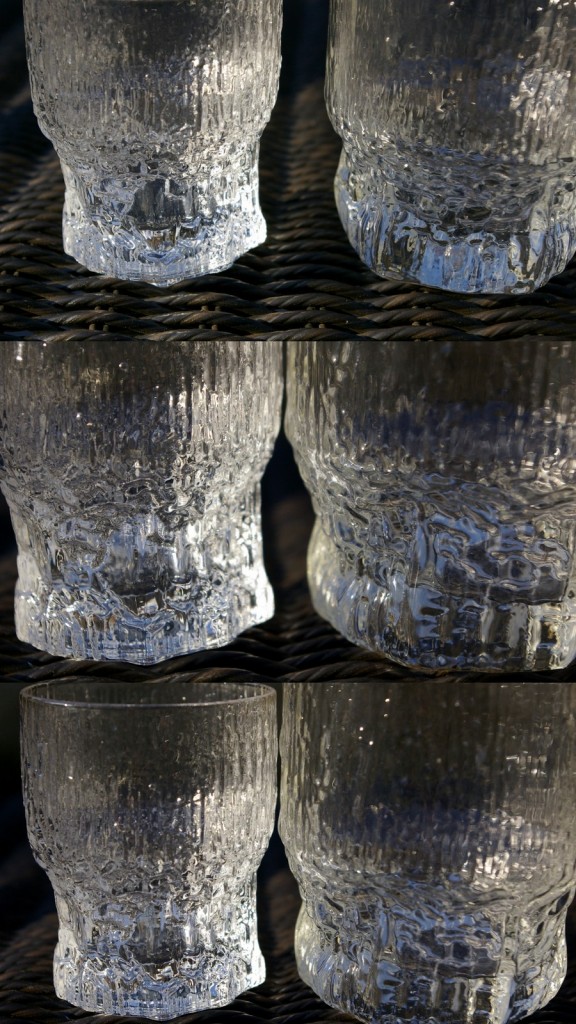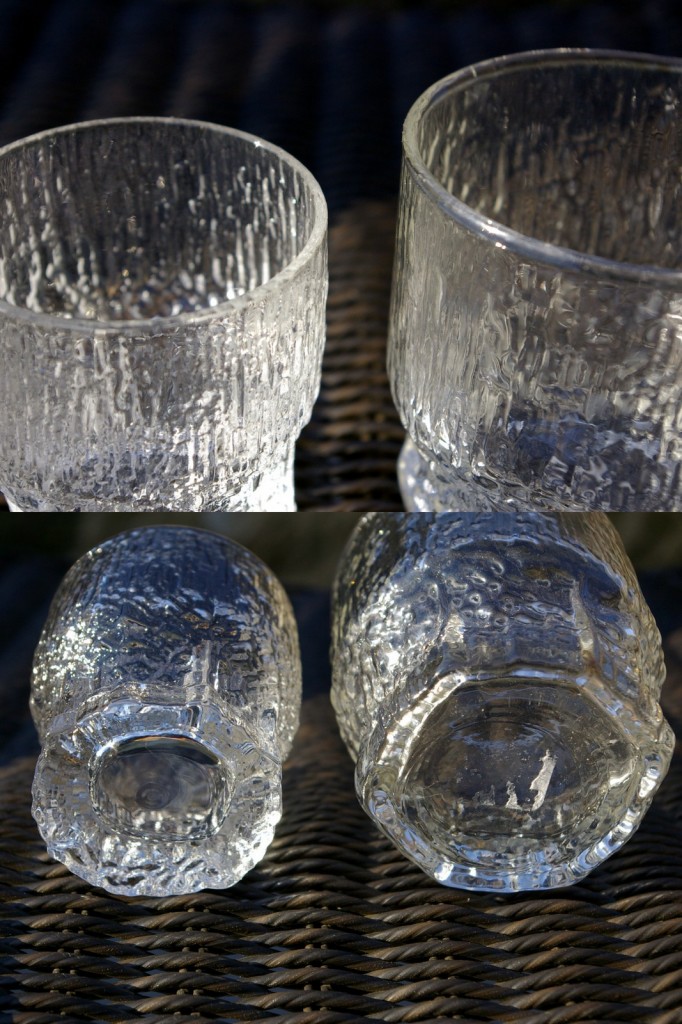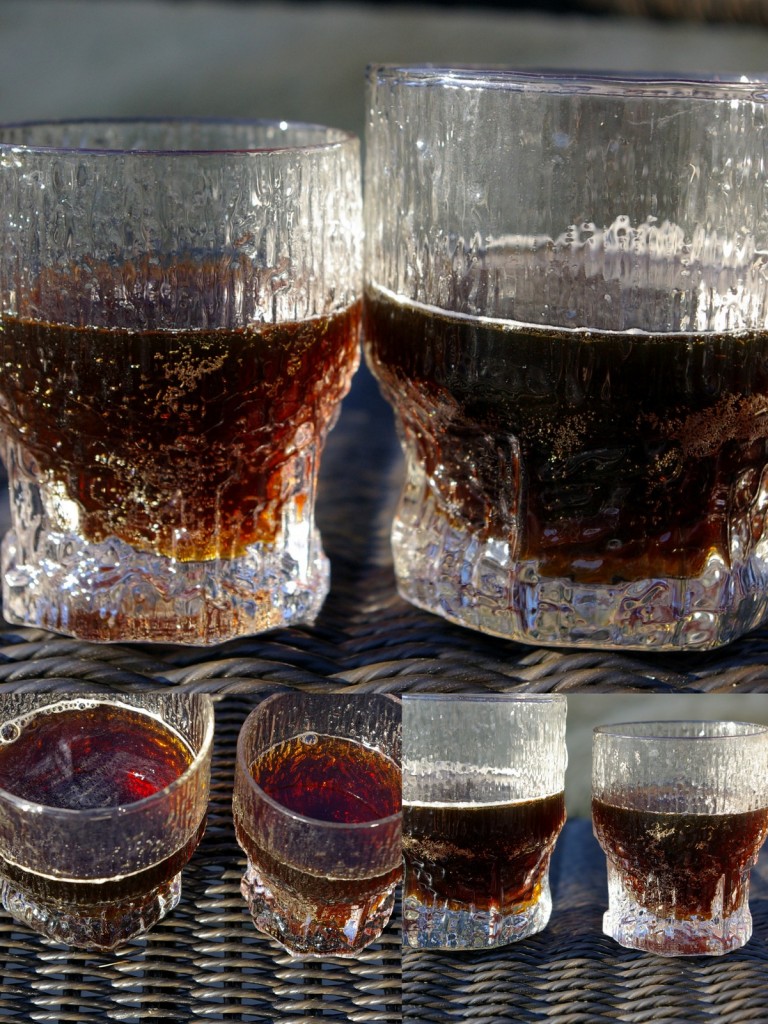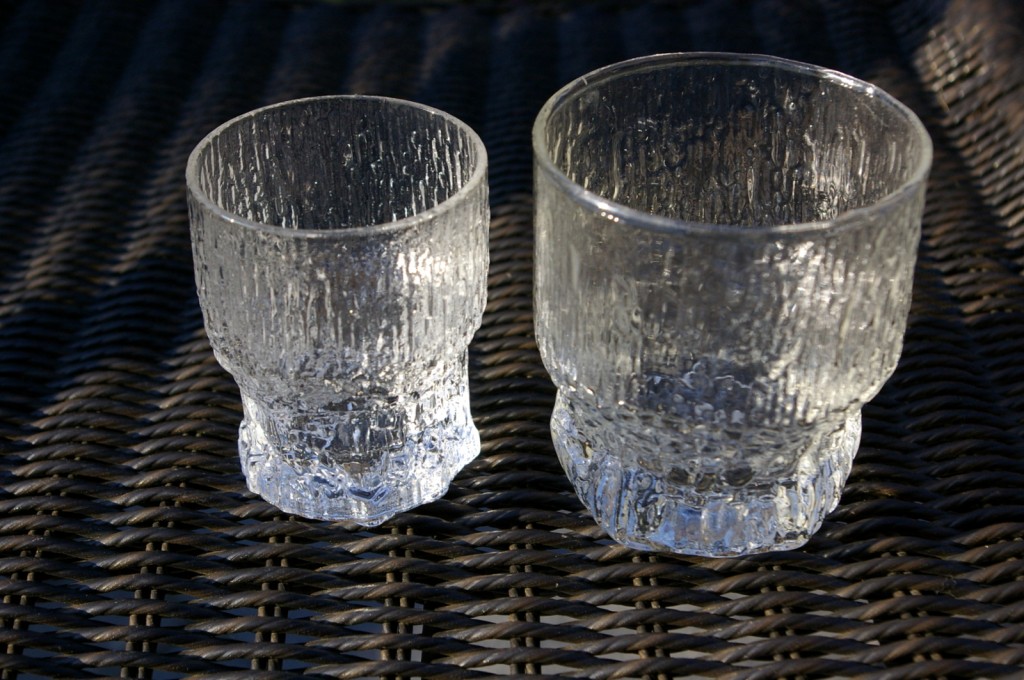Iittala’s Aslak: Spotting the Fakes
Welcome to a new series on the blog: how to spot a fake. Â Why is this important, you ask? Â We’ve seen many an inexperienced seller mistakenly sell knock-off goods as the real thing. Â We have quite a few posts planned for this series, including one on Lisa Larson figurines, and a few more on Iittala glassware.
First up? Â We’re examining Tapio Wirkkala’s “Aslak” pattern for Iittala, designed around 1965. Aslak first appeared in Iittala’s product catalogue in 1973 (Vigier and Pina 155). Â We haven’t seen many knock-offs of these glasses, but we managed to snag one at a thrift a few months back so we could compare the real with the fake, side-by-side.
So, which one wasn’t produced by Iittala? Â The glass on the right. Â The first difference between the glasses is purely tactile — the knock-off glass feel softer to the touch. Â The real Aslak has sharper and more defined edges, especially on the lower half of the glass. Â The definition and texture that is so distinctive in much of Iittala’s glassware isn’t present in the knock-off. Â The upper portion of the knock-off is also less detailed than the genuine article.
 Aslak’s pattern is very vertical. Â If you look closely at the middle portion of the knock-off, the pattern is muddied and no longer runs up-to-down. Â In fact, it looks almost horizontal at times.
Aslak’s pattern is very vertical. Â If you look closely at the middle portion of the knock-off, the pattern is muddied and no longer runs up-to-down. Â In fact, it looks almost horizontal at times.
 Looking at the glasses from the bottom, the real Aslak has a much thicker wall than the knock-off. Â We thought the top lip of the glasses might be a telling sign between the two as well, as the real Aslak has a very thin lip-line, but we examined the rest of our Aslak and the lip size seems to vary from glass-to-glass (it probably changes depending on the time of production).
Looking at the glasses from the bottom, the real Aslak has a much thicker wall than the knock-off. Â We thought the top lip of the glasses might be a telling sign between the two as well, as the real Aslak has a very thin lip-line, but we examined the rest of our Aslak and the lip size seems to vary from glass-to-glass (it probably changes depending on the time of production).
 The final difference between the knock-off and real Aslak is the level of detail in the facets at the base of the glass. Â The bottom edge of the the reproduction has far fewer facets, and indeed feels almost smooth to the touch in comparison with the Iittala glass, which feels ribbed and more organic.
The final difference between the knock-off and real Aslak is the level of detail in the facets at the base of the glass. Â The bottom edge of the the reproduction has far fewer facets, and indeed feels almost smooth to the touch in comparison with the Iittala glass, which feels ribbed and more organic.
Next up — we’ll be looking at Iittala Kekkerit.


This is so incredibly useful – thank you for putting it together, I’m really looking forward to more glass posts!
This is gonna be a great series of posts! Interested to learn more about this stuff, especially w/ the iittala lookalikes
Great article and so helpful. Thank you for sharing this info.
Great post! Just picked a single Kekkerit yesterday for grins, I’m really looking forward to that discussion!